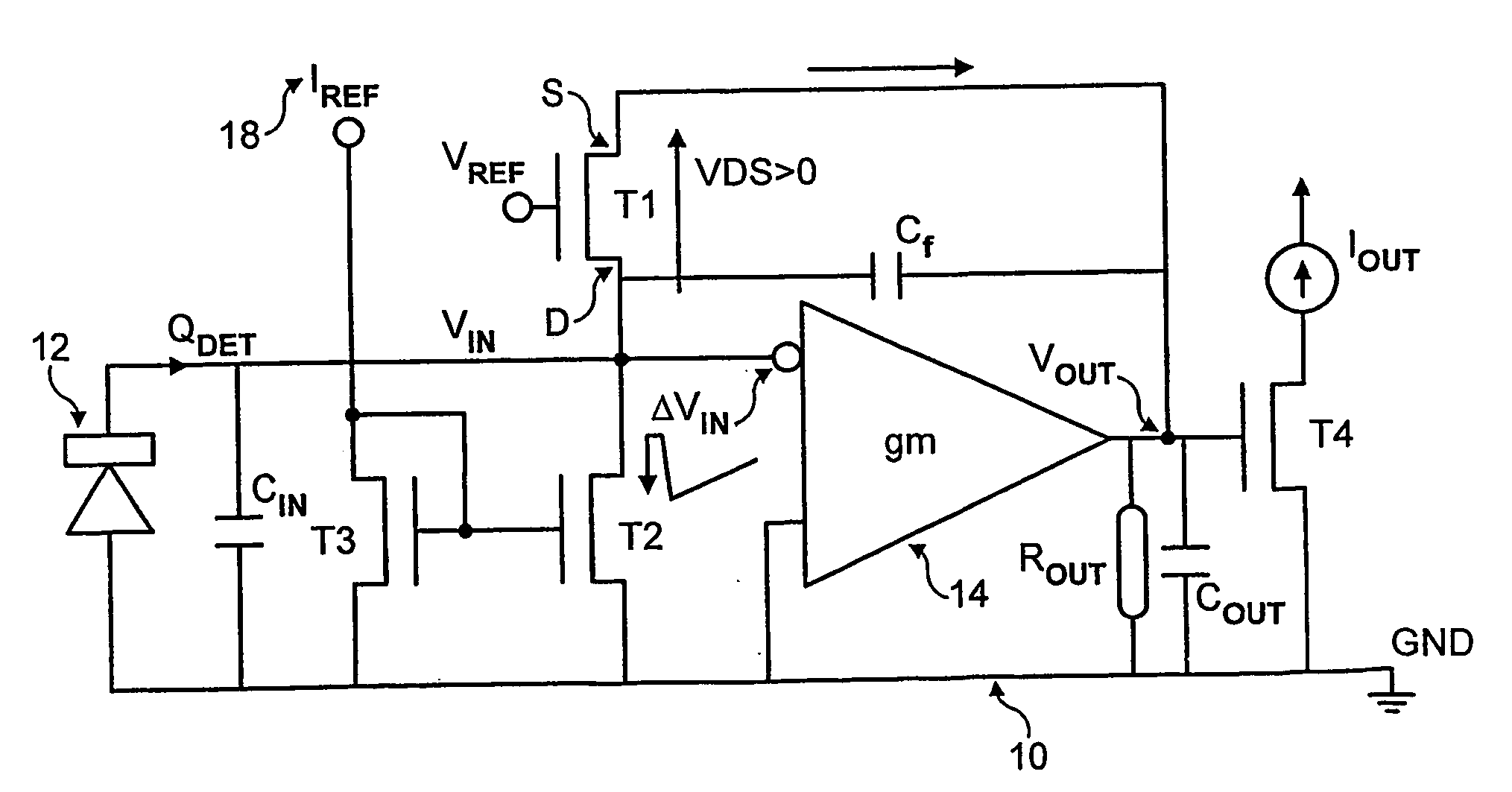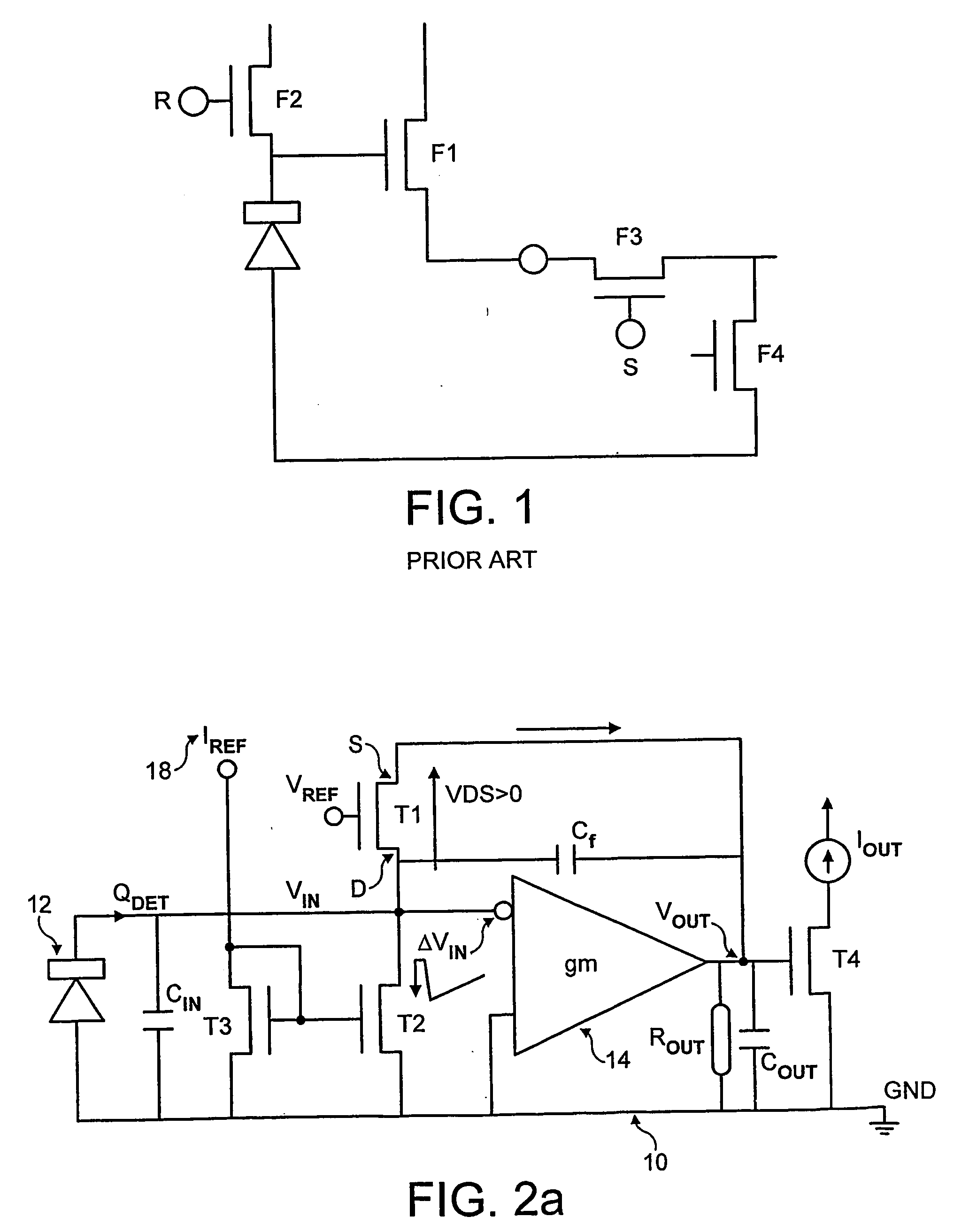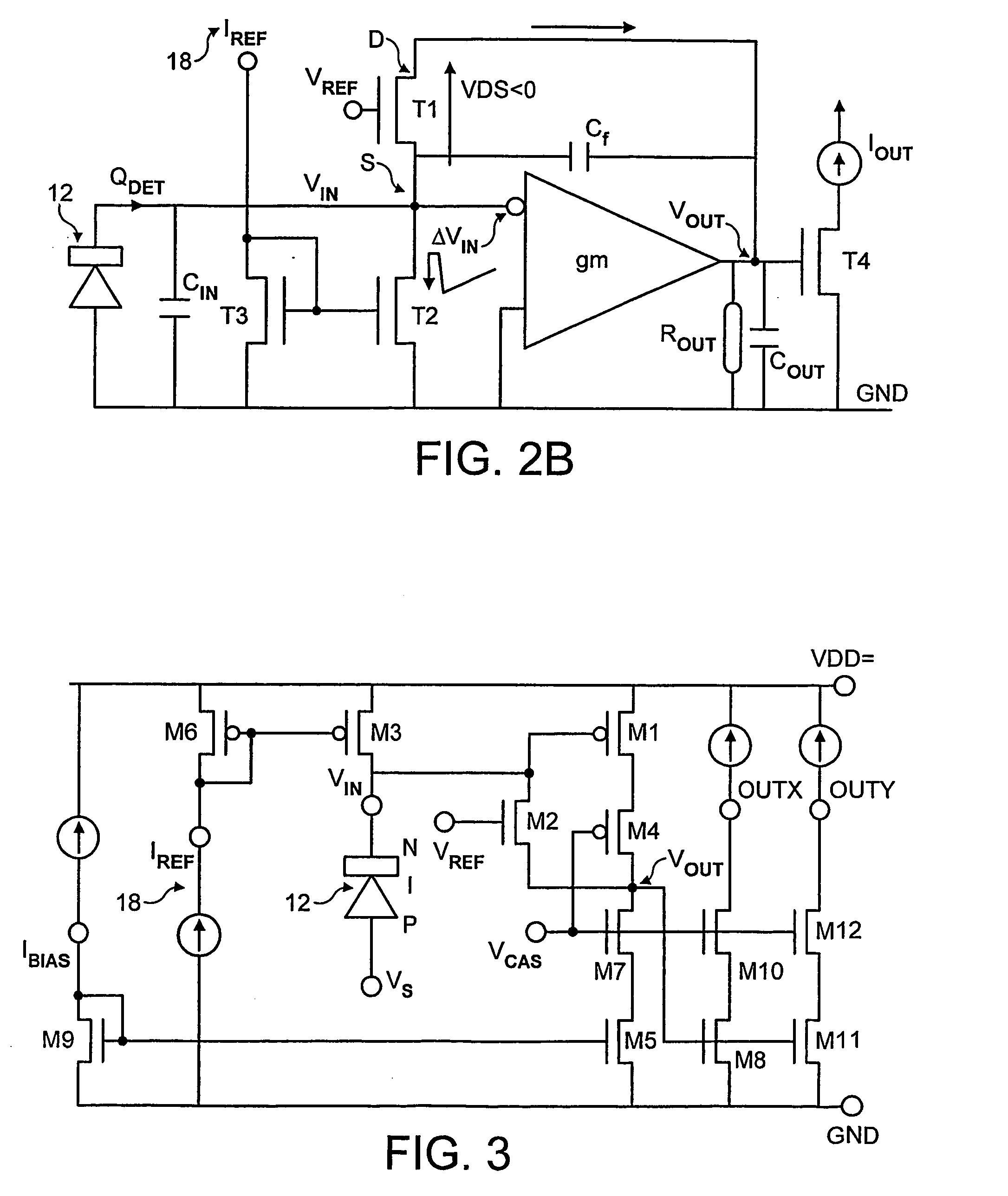Charge or particle sensing
a particle sensing and charge technology, applied in the field of charge or particle sensing, can solve the problems of limiting the minimum achievable pixel dimension of the type of pixel sensor, limiting the operation and noise performance, and expensive and complex fabrication
- Summary
- Abstract
- Description
- Claims
- Application Information
AI Technical Summary
Benefits of technology
Problems solved by technology
Method used
Image
Examples
Embodiment Construction
[0085] In the various figures, like reference signs refer to like parts.
[0086]FIG. 2A shows a simplified schematic block diagram of one sensing device 10, such as a pixel cell, of a Single Particle Detector (SPD) planar array of many such devices, or cells, formed in an integrated circuit. The sensing device 10 has a sensor 12, an inverting transconductance amplifier 14, a current mirror formed from two transistors T2 and T3, a feedback MOSFET transistor T1, and an output MOSFET discriminator transistor T4. The sensor 12 is connected to the input of the amplifier 14. The feedback MOSFET transistor T1 has its main current path connected between the input and the output of the amplifier 14 and the output of the amplifier 14 is fed to the output MOSFET discriminator transistor T4, and is configured to be able to provide negative feedback. The discriminator transistor T4 is driven directly from the output node of the transconductance amplifier 14. The transistor T4 acts as a switch, re...
PUM
 Login to View More
Login to View More Abstract
Description
Claims
Application Information
 Login to View More
Login to View More - R&D
- Intellectual Property
- Life Sciences
- Materials
- Tech Scout
- Unparalleled Data Quality
- Higher Quality Content
- 60% Fewer Hallucinations
Browse by: Latest US Patents, China's latest patents, Technical Efficacy Thesaurus, Application Domain, Technology Topic, Popular Technical Reports.
© 2025 PatSnap. All rights reserved.Legal|Privacy policy|Modern Slavery Act Transparency Statement|Sitemap|About US| Contact US: help@patsnap.com



